We are stardust (EN - CAST) Somos polvo de estrellas
We are stardust (EN - CAST) Somos polvo de estrellas
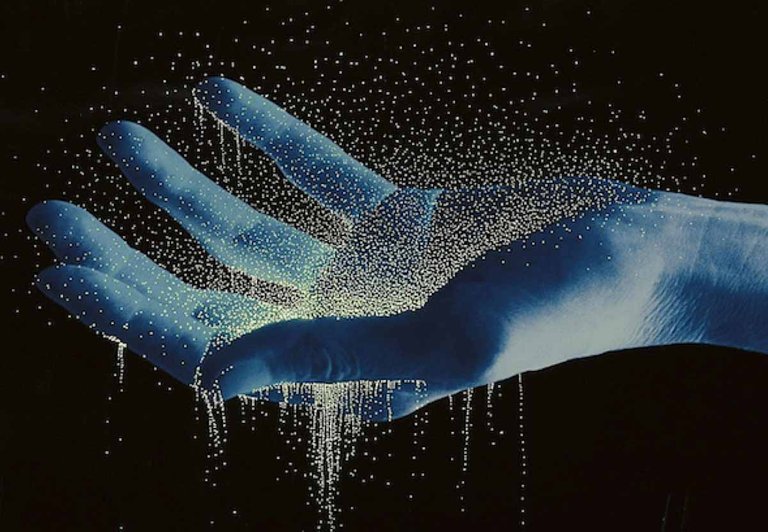
Souce
"We are made of stardust" is a very typical phrase, but now a couple of studies including research at the University of Michigan have found that this phrase may be more true than we previously thought.
“Estamos hechos de polvo de estrellas” es una frase ya muy típica, pero ahora un par de estudios incluida una investigación en la universidad de Michigan ha descubierto que esta frase puede ser más cierta de lo que pensábamos anteriormente.
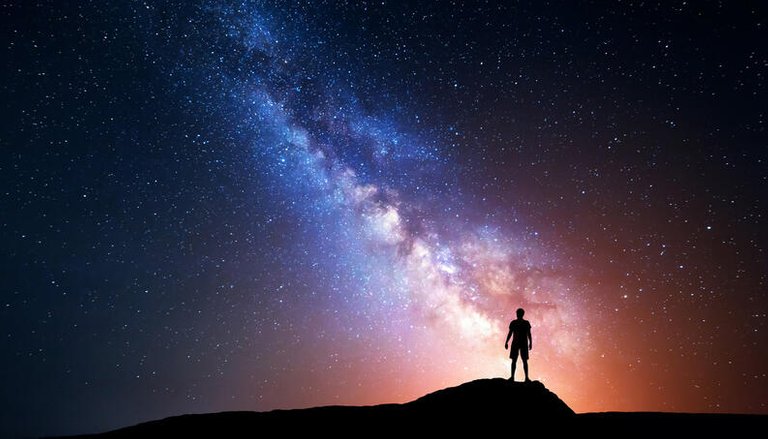
Souce
The study I'm going to tell you about was led by University of Michigan researcher Jackie Li and published in the scientific journal and Six Advances, the study found that most of the carbon in the earth was probably not formed on the ground, nor in its environment but it came from the interstellar medium, from the dust that exists in the space between the stars and this probably happened to you long after the protoplanetary disk formed and will heat up, the protoplanetary disk is what the disks are called of gas and dust that surround the young stars, as is the case with our sun.
El estudio del que les voy a hablar fue dirigido por el investigador de la universidad de Michigan Jackie Li y publicado en la revista científica y seis avances, el estudio descubrió que la mayor parte del carbono de la tierra probablemente no se formó en la tierra, ni tampoco en su entorno sino que llegó del medio interestelar, del polvo que existe en el espacio entre las estrellas y esto probablemente te sucedió mucho después de que el disco protoplanetario se formara y se calentará, el disco protoplanetario es como se llama a los discos de gas y polvo que rodean a las jóvenes estrellas, como el caso de nuestro sol.
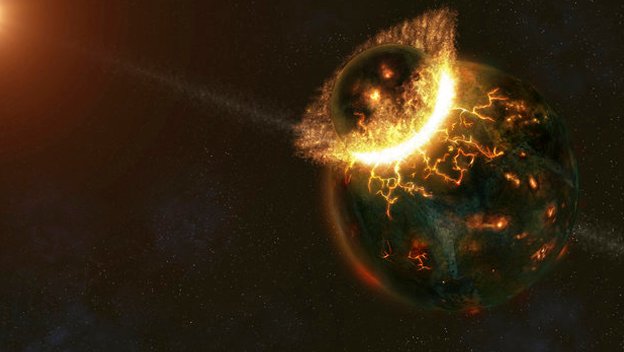
Souce
Previously, researchers thought that the carbon in the earth had come from the molecules that were present in the gas and dust of the nebula from which the solar system arose, this carbon simply accumulated on the protoplanets, which is what the nuclei are called of the future planets in formation and that we can imagine those the size of the dwarf planet Ceres, which is believed to be the last protoplanet that has survived within the area of the planets of the solar system, but according to this new study that is not what happened.
Anteriormente los investigadores pensaban que el carbono de la tierra había venido de las moléculas que estaban presentes en el gas y polvo de la nebulosa de donde surgió el sistema solar, este carbono simplemente se fue acumulando sobre los protoplanetas que es como se llaman a los núcleos de los futuros planetas en formación y que podemos imaginar los del tamaño del planeta enano Ceres que se cree que es el último protoplaneta que ha sobrevivido dentro del área de los planetas del sistema solar, pero según este nuevo estudio eso no fue lo que ocurrió.
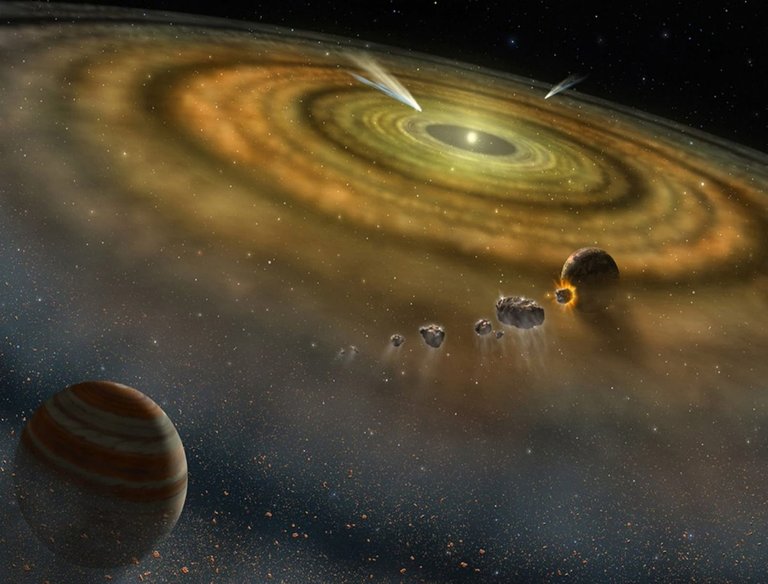
Souce
The problem is that when the sun was lit it heated the protoplanetary disk and the elements vaporized, as the disk cooled some of the elements condensed and helped to create the solid bodies that would give rise to the planets, moons or asteroids. , but there is a problem with the condensation of carbon, since that process does not work for this element, once the carbon vaporizes it does not condense back into a solid easily, what the carbon does when it vaporizes is to form very compounds volatile, which require much lower temperatures to form solids, much lower than those in the environment of rocky planets such as Earth, which were forming in the hot area of the solar system thanks to the heat of the young sun, is more According to the researchers, once vaporized carbon, even if it cools, does not condense back into organic form, this means that the carbon in the earth and the organic molecules that end They combined to form life, they had to come from beyond the area heated by the sun, according to the researchers the explanation is that it came from the interstellar medium, surely brought by comets but we were also lucky to receive the right amount.
El problema está en que cuando se encendió el sol éste calentó el disco protoplanetario y los elementos se vaporizar, a medida que el disco se enfrío algunos de los elementos se condensaron y ayudaron a crear los cuerpos sólidos que darían origen a los planetas lunas o asteroides, pero hay un problema con la condensación del carbono, ya que ese proceso no funciona para este elemento, una vez que el carbono se vaporiza no se vuelve a condensar en un sólido con facilidad, lo que hace el carbono al vaporizarse es formar compuestos muy volátiles, que requieren temperaturas mucho más bajas para formar sólidos, mucho más bajas que las que había en el entorno de los planetas rocosos como la tierra, que se encontraban formándose en el área caliente del sistema solar gracias al calor del joven sol, es más según los investigadores el carbón una vez vaporizado aunque se enfríe no vuelve a condensarse en forma orgánica, esto significa que el carbono de la tierra y las moléculas orgánicas que terminaron combinándose para formar la vida, tuvieron que proceder de más allá de la zona calentada por el sol, según los investigadores la explicación es que vino del medio interestelar, seguramente traído por cometas pero además tuvimos la suerte de recibir la cantidad justa.
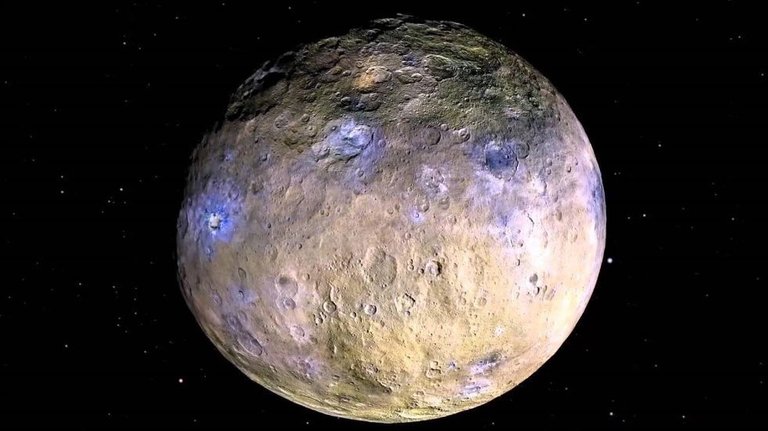
Souce
According to the astronomer from the University of Michigan Edwin Berlin said that "the planet needs carbon to regulate its climate and also allow life to exist but it is something very delicate, you do not want to have too little but you do not want to have too much," said the researcher.
Según el astrónomo de la universidad de Michigan Edwin Berlin dijo que “el planeta necesita carbono para regular su clima y permitir también que exista vida pero es algo muy delicado, no quieres tener muy poco pero tampoco quieres tener demasiado”, dijo el investigador.

Thank you for visiting my blog. If you like posts about #science, #planet, #politics, #rights
#crypto, #traveling and discovering secrets and beauties of the #universe, feel free to
Follow me as these are the topics I write about the most. Have a wonderful day
and stay on this great platform :) :)
Gracias por visitar mi blog. Si te gustan las publicaciones sobre #ciencia, #planeta, #politica, #derechos
#crypto, #traveling y descubriendo secretos y bellezas del #universo, siéntete libre de
seguirme, ya que estos son los temas sobre los que más escribo. ¡Tenga un día maravilloso
y siga en esta gran plataforma :) :)
0
0
0.000
que buen articulo.
Congratulations @jorgebgt! You have completed the following achievement on the Hive blockchain and have been rewarded with new badge(s) :
Your next target is to reach 17000 upvotes.
You can view your badges on your board and compare yourself to others in the Ranking
If you no longer want to receive notifications, reply to this comment with the word
STOPCheck out the last post from @hivebuzz:
Support the HiveBuzz project. Vote for our proposal!